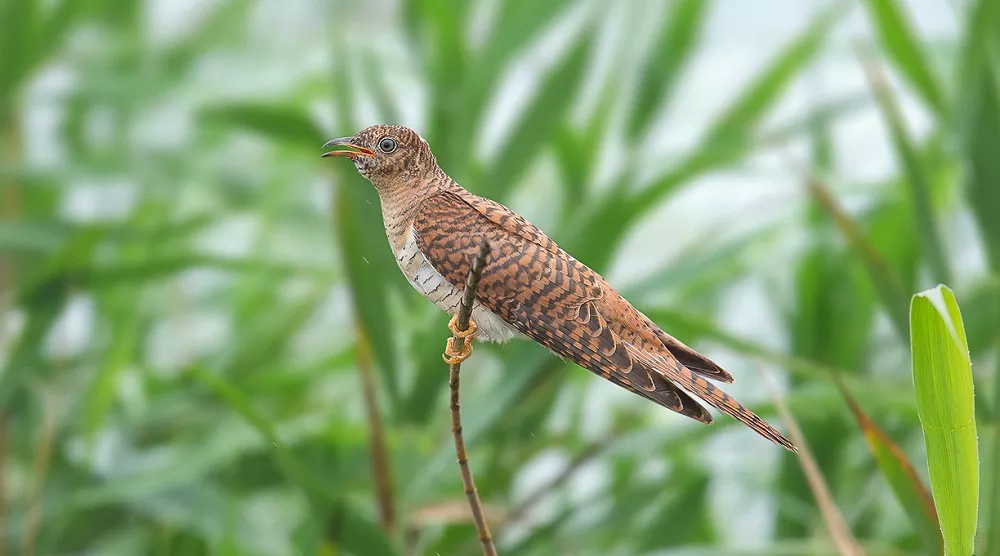The cuckoo bird, scientifically known as Cuculus canorus, is a bird species that is well-known for its distinctive call and unique breeding habits. Cuckoos are found in various parts of the world, including Europe, Asia, Africa, and Australia.
- Physical Description
Cuckoos are medium-sized birds, typically measuring around 30-40cm in length. They have a slender body and long tail feathers, which give them a distinctive appearance. Cuckoos have a variety of plumage colors, but they are usually brown or gray with white spots or stripes. They also have a curved beak that is well-suited for feeding on insects.
- Behavior and Breeding Habits
Cuckoos are known for their unique breeding habits, which involve laying their eggs in the nests of other bird species. The female cuckoo will often remove one of the host bird’s eggs and lay her own egg in its place. When the cuckoo chick hatches, it will push the host bird’s eggs or chicks out of the nest, allowing it to receive all of the attention and resources from the host parents.
Cuckoos are also known for their distinctive call, which is a well-known sound in many parts of the world. The male cuckoo produces a loud, repetitive “cuck-oo” call during the breeding season to attract a mate.
- Diet
Cuckoos are primarily insectivores, feeding on a variety of insects, including caterpillars, beetles, and grasshoppers. They also occasionally feed on small vertebrates, such as lizards and small birds.
- Conservation Status
Many species of cuckoos are declining in numbers due to habitat loss, climate change, and other factors. Several species are listed as endangered or vulnerable by the International Union for Conservation of Nature (IUCN), including the Javan hawk-cuckoo and the oriental cuckoo.
Cuckoos are fascinating bird species with unique breeding habits and a distinctive call. While they are known for their brood parasitism, cuckoos play an important role in many ecosystems by controlling insect populations. However, like many bird species, cuckoos are facing a range of threats, and conservation efforts are needed to ensure their survival.


 Facebook
Facebook  Instagram
Instagram  Youtube
Youtube 